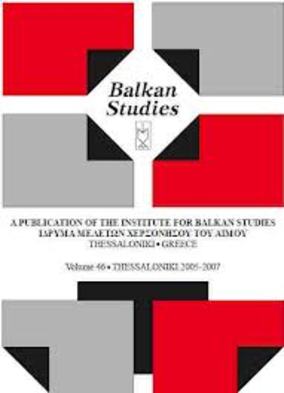Quelques observations concernant l'etymologie et la genese d'un ancien nom de Dieu : Zalmoxis
Part of : Balkan studies : biannual publication of the Institute for Balkan Studies ; Vol.22, No.2, 1981, pages 229-245
Issue:
Pages:
229-245
Parallel Title:
Some remarks concerning the etymology of an ancient God name : Zalmoxis
Section Title:
Articles
Author:
Abstract:
Zalmoxis, chief god of the Geto-Dacians, is first mentioned by Herodotusin his “Historiai” IV, 93-96.According to most sources, this name appeared in three different forms:a) ZALMOXIS, used by Herodotus, 5th cent. B. C. ; by Plato, 4th cent. B.C. ; Porphyrios, 3rd cent. B. C. ; Diodorus Siculus, 1st cent. B. C. ; Apuleius,2nd cent. A. D.; and Jordanes, 6th cent. A.D.; b) SALMOXIS, a simplevariant in some manuscripts of Herodotus, and c) ZAMOLXIS, used byPoseidonios, 1st cent. B. C.; by Strabo, 1st cent. B. C.-A. D. ; Lucian of Samosata,2nd cent. A. D. ; Diogenes Laertios, 3rd cent. A. D. ; and by the EmperorJulian the Apostate, 4th cent. A.D.More than three centuries separate the first mention of Zalmoxis-Salmoxisfrom those who employed the form Zamolxis. It threrefore stands toreason that the graphical form Zamolxis is nothing more than a relativelylate metathesis of the correct form Zalmoxis.Still from the 3rd century onwards, various writers have attempted tofind an etymological explanation for the name of this god. Most of them tookinto account the form Zamolxis (so Praetorius in 1688; Cless 1852; and P.Kretschmer in 1935). They derived this form from the Indo-European rootmeaning “earth”, related to the Old Slavic zemlja, the same, and to the Lituanianname for the god of the earth Zameluks (Ziameluks). But logically, allthis efforts to explain the form Zamolxis are futile as they refer to an unrealname.The form Zalmoxis was explained by Porphyrios in the 3rd cent. B. C. asderiving from a Thracian word zalmos “skin, fur”, wich does not seem plausible.In 1913 Nicolae Densusianu in his book “Dacia preistoricà” translatedthe name Zalmoxis into Romanian as “zeul mos” (p. 213), bringing no argumentsto support his hypothesis.My hypothesis derives from the dissection and analysis of several oscillatinggraphs wich have been classified in two groups according to certainsimilarities in form, given that the meanings are not generally known:Abrozelm e, Auluselm i s, Diazelm i s, Dolezelm i s, Ebryzelm i s, Mestuzelmi s, Salm i dessos, Zalm o degikos, Zahn o vis, Zehn o «tas, Zerm odigestos,Zilm i s sos etc.The graphic transcriptions are oscilating since they use Greek and Latinletters to note sounds wich are specific to the Thracian and Geto-Dacianlanguages. Thus, the vowel presumed as being a (Romanian à, Albanian e)is hesitantly transcribed as a, e, o, or even The consonant presumed to be S(Romanian ?, Al anian sii) is transcribed with the same hesitancy as s, ss andX. In the same manner, the final elements -as, -es, -os, -is are Greek and Latinendings.All these names are compound words.The lexical elements zal-, zel-, sal-, sel-, zil-, zer- repressent, in our opinion,the transcription of a Geto-Dacian term *zel- meaning “god”, like -dios, -ziosin the famous name Sabadios, Sabazios. The changing place of this element iscomparable to Greek Theodoros/Dorotheos.Concerning the other compound element (mox-, mo-, miss-, mis-, mi-),it can be supposed, by regressive extrapolation, that the original meaning ofthis word, representing Geto-Dacian moS were respectively “old man”, “forefather”,“founder of a family line, or of a community”, chief, as it results fromthe comparison with Romanian mo?, the same (cf. Albanian motshë “age”).Therefore Zalmoxis could have been a god-ancestor, a Deus Avus, DeusParens, Deus Vêtus. This means that Zalmoxis is nothing but an abstract,heavenly equivalent of a being represented on earth by the most importantpersonality of the patriarchal family, of the peasant assembly (Romanian ob?te),or of the tribe.
Subject:
Subject (LC):




